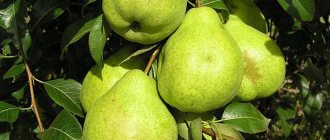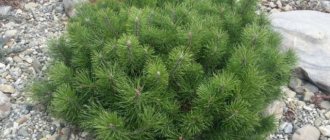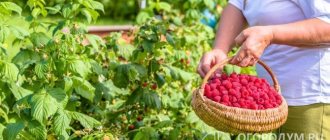Are you looking for something to decorate your garden and yard when the first spring flowers fade? Something that will be quite elegant and bright, but at the same time easy to maintain? Then pay attention to verbena - an elegant herbaceous plant that will cover the area with a colorful carpet. And we will tell you what types of verbena exist and how to care for them!
general characteristics
Verbena belongs to the family of simple and unpretentious herbaceous plants of the same name. These can be small shrubs, a thick flowering carpet, or even tall, straight subshrubs up to several meters tall.
Verbena flowers are always small, up to a maximum of 2.5 cm, but at the same time they are collected in dense inflorescences and brushes. The color spectrum is wide and varied: from white and yellow to pink, dark red and even blue or dark blue.
Some varieties of verbena are actively used in medicine for the treatment and prevention of digestive problems. In cooking, it is often used for flavor in the preparation of preserves and preparations. Medicinal verbena is also in demand among beekeepers and honey lovers.
Landing in the ground
When the seedlings have grown, become stronger, and the last spring frosts have passed, you can begin to transplant the seedlings into flower beds. While the seedlings are being hardened off, it is worth clearing the area of weeds, loosening and fertilizing the soil, and leveling the surface.
When to replant?
Verbena seedlings are transplanted into the ground when the seedlings have a well-developed root system and the last frost has passed - usually in May, with differences by region:
- early May - in the south;
- third ten days of May - in the Moscow region, the Middle Zone;
- end of May – beginning of June – Leningrad region.
Soil requirements, site selection
Verbena grows best in soil:
- light;
- well drained;
- moderately rich in nutrients
- the reaction should be neutral or slightly alkaline (pH 6.0-8.0);
- permeable is the most important condition, so in certain situations (for example, clay soil, growing in pots) it is worth making good drainage.
In nature, verbena grows on dry sandy or sandy-clayey soils. Before planting in the ground, it is worth ensuring the drainage and aeration of the substrate. Verbena cannot grow in heavy clay soils or wetlands.
These flowers grow successfully in poor areas, so it is not necessary to fertilize the entire bed before planting. However, it is advisable to mix organic compost well with the soil before planting the seedlings in the ground.
The second key condition for the success of growing verbena is a sufficient level of sunlight - 8-10 hours of light during the day! Therefore, you need to choose areas with an exposure to the west or south, ideally protected from the wind.
Warning! Verbena grown in the shade is prone to the development of fungal diseases.
Landing in the ground
Verbena is very sensitive to frost, so seedlings are not planted outside until the second half of May.
When planting, seedlings are placed at a distance of 20 cm (garden verbena), and in the case of Buenos Aires verbena - every 40-50 cm. The latter species has overgrown tall stems that do not need supports, since they are flexible and durable.
After planting, the plants are watered. Verbena requires about 3 cm of rain per 1 m2 per week. This amount of water is difficult to measure, so it is worth observing the rule of moderation. Verbenas do not like excessive watering - then their roots tend to rot, but they also do not grow well in too dry conditions. Curling leaves are a sign of dryness. So we water rationally, taking into account current meteorological conditions. Fertilization can be carried out 2 times per season.
History and use
Simple and unremarkable at first glance, verbena is a sacred plant. The name itself comes from the Latin “word”, because it was verbena that was used in oaths and spells.
The ancient Celts prepared a drink of love from this flower and created protective amulets against evil spirits. And according to Christian legend, it was this flower that grew at the foot of the cross of Christ on Golgotha, and it was used to stop bleeding in wounds.
Verbena was a symbol of Venus, and was carried in amulet even during battles with enemies. It was believed that it gives beauty and youth, and in children it develops abilities and memory. They believed that verbena brings and preserves prosperity and wealth in the home.
Verbena wreaths strengthened friendships and marriages, and its juice tempered iron for swords and daggers. Healers treated all illnesses with it, and washed their hair with its decoction for headaches and worries. Witches used verbena flowers for their spells and love potions.
Types of verbena
There are more than 120 species of verbena in the world, but only a few of the most popular ones are cultivated and propagated at home. Most varieties are South American and grow everywhere from Chile to Canada. But some popular species have spread throughout Europe.
Pharmaceutical verbena
Verbena (medicinal) is the most popular and widespread species in our latitudes. This is a herbaceous perennial with a developed rhizome, which grows in height by 30-60 cm. Small flowers are collected in neat paniculate inflorescences, which begin to bloom in the axils of the leaves.
Hybrid verbena
Hybrid verbena is a whole group of selected garden varieties that were bred through long-term crossings of wild species. These are annual species that can be low-growing, large-flowered, or even ampelous. Height is from 20 to 70 cm, and long creeping shoots are good in flowerpots and decorative compositions.
Verbena canada
This is one of the classic varieties - a low-growing garden shrub up to 20 cm tall. The bunched inflorescences look interesting, which distinguish this variety from the paniculate ones. The color is white, pink or purple, which contrasts favorably with the bright openwork leaves.
Lemon verbena
It is an aromatic perennial shrub that grows up to 2 meters in height. The branched stems are covered with bright green leaves, which, when crushed, emit a characteristic citrus aroma with light notes of lemon balm and mint.
Verbena tough
This is a variety with long creeping shoots, at the ends of which purple and blue buds bloom. Another interesting feature is the hard, toothed, elongated leaves. In its native Brazil, tuberous verbena is perennial, but in our latitudes it grows as an annual.
Verbena Buenos Aires
The popular variety is known by many other names: tall, Brazilian, Argentine, lilac-flowered. In its native South America it is a wild perennial, but in our gardens it is grown as an ornamental annual.
This is a large variety with straight erect stems up to 1.5 meters, decorated with lilac umbrella inflorescences. Buenos Aires verbena looks impressive and, together with its jagged leaves, resembles openwork lace.
Growing from seeds to seedlings
The optimal option for growing a spectacular look on the site and for decorating terraces, balconies, loggias. It is important to plant seedlings on time so that the sprouts do not become too elongated. Late sowing of seeds is wrong: seedlings do not have time to grow and strengthen sufficiently, adult plants will be weak, and flowering will be less abundant.
Deadlines
Suitable time for planting seeds in the ground: late March - early April. In February - the first ten days of March, daylight hours are too short for the seedlings to have time to grow by the time they are transplanted into the ground.
Seed preparation
Stratification is the process of hardening planting material. The procedure is simple:
- the seeds are laid out on a damp cloth, wrapped in an opaque plastic bag, and put into a compartment for storing vegetables (in the refrigerator);
- within three to five days, the planting material gets used to the cold;
- after stratification, the seeds are dried to avoid rotting;
- Now the grains are suitable for growing seedlings.
Soil and container
The soil should be nutritious, with a high percentage of humus, but loose. It is useful to add a little fine sand to the soil mixture from the flower shop.
Wooden boxes or containers are suitable for growing verbena seedlings. You can add a little expanded clay to the bottom for good drainage.
Landing
How to proceed:
- the prepared seeds are laid out at a distance of 3–4 cm from each other;
- you can sprinkle a thin layer (0.5 cm) of humus on top;
- the soil is sprayed, the container is covered with polyethylene or glass to maintain moisture in the mini-greenhouse;
- Until the seeds have sprouted, shelter above the ground is a must.
Seedling care
Helpful Tips:
- watering. Excess moisture interferes with the development of sprouts. The soil is moistened (sprayed) only when the top layer dries;
- lighting. The plant loves light, like many beautifully flowering species. The sprouts should be in a well-lit room, but “direct sun” on the sprouts is unacceptable;
- ventilation of the mini-greenhouse. At the seed germination stage, a mini-greenhouse is created. Every two days the space under the glass is ventilated and condensation is collected. A few days after the sprouts appear, the ventilation time is increased to 3–4 hours, increased to half a day, then the container is completely opened so that the sprouts do not become moldy;
- temperature. During the “black earth” period (waiting for germination), the indicators should be at a level of +18 to +20 degrees. In a cold room, with high humidity, under glass or cellophane, the seeds often rot. After 2–4 weeks, sprouts appear. After two or three days, the container is transferred to a cooler room: from +14 to +16 degrees, so that the seedlings gradually stretch out. It is important that a cool room has good lighting;
- topping. The procedure is carried out for the ampelous variety of verbena. At the stage of formation of 5 and 6 leaves, the tops of the sprouts are pinched to stimulate the growth of lateral elements and good branching of the bush. Verbena of other varieties is not pinched.
Transplanting
First, sprouts are planted into separate containers. The average time is a month after seed germination, when 2 young leaves appear. Suitable containers are cassettes or peat pots. It is important that the base contains a high percentage of peat and not cardboard, which is often added to cups by unscrupulous manufacturers
Pick up the seedlings carefully, making sure that the tender roots remain intact. After a couple of weeks, when the seedlings have taken root in the new container, low concentration mineral fertilizers are applied. Complex formulations are suitable for beautifully flowering species.
Important details:
- Verbena does not tolerate cold and frost well, so there is no need to rush to move mature sprouts to the site;
- some species can tolerate -2..-3 degrees, but prolonged exposure to low temperatures negatively affects even cold-resistant varieties;
- the soil and air should warm up to at least +14..+16 degrees. It is important that frost stops completely;
- On the site, be sure to dig up the substrate, break up all the clods, and carry out loosening;
- It is useful to add fertilizers and nutrients: ammonium nitrophosphate (50–60 g), humus (about a medium bucket) and a glass of wood ash. The norm is indicated for 1 sq. m;
- make small holes in the prepared soil into which the sprouts will fit along with the roots. It is useful to arrange a drainage layer (1 cm) of sand at the bottom of the hole;
- After planting, sprinkle the roots with substrate, compact them a little, and moderately water the area around each plant.
Choice of location and lighting
Verbena is unpretentious, grows well both on nutritious and light loams, and on heavy soil combined with sand to increase looseness. Swampiness is the enemy of a beautifully flowering species.
A bright place is ideal for placing verbena bushes. Even with a completely open area, without shade, pigeon grass grows well and blooms well.
It is important that there are no weeds in the planting area. Digging the soil in autumn and spring reduces the risk of pests and weeds breeding.
Verbena care
The undemanding verbena pleases gardeners with its unpretentiousness to conditions, so it is easy to manage in the garden. If you monitor watering, control the density of crops and avoid excessive amounts of moisture, there will be no problems with it.
Temperature
The ideal temperature for young shoots of verbena is above 20 degrees, and an adult plant feels comfortable even at +10. Abundant flowering will continue at 16-25 degrees, but short-term cooling does not affect the condition of the flower. The main thing is that it is returnable, because the flower does not overwinter in the open ground.
Lighting
Verbena loves light, and the more the better, because with a lack of lighting, powdery mildew and other diseases can appear. The flower tolerates drought and heat better than lack of sun and high humidity.
The soil
Verbena does not require special soil preparation or even regular loosening. Only with abundant watering in hot weather is it recommended to fluff up the soil for air circulation, otherwise the roots may begin to rot. And to avoid drying out, use mulch made from regular foliage or ready-made decorative mulch.
The soil for verbena is loose, permeable loam, so if the soil in the area is too heavy, add sand. And to protect the root system from moisture, lay a drainage layer of stones, expanded clay or brick fragments.
Watering
The period of active flowering is the very time when verbena especially needs abundant and systematic watering. But by the second half of summer, be sure to reduce the frequency: verbena is resistant to short-term drought.
Fertilizers and fertilizing
The ideal fertilizer for verbena is mineral fertilizers and special complex formulations. The easiest way is to immediately buy ready-made mixtures, but you can also use prepared organic matter. Apply fertilizer once a season and monitor the nitrogen level: if it is too high, the greenery will grow to the detriment of flowering.
Trimming
Bushy verbena grows quickly and turns into a thick carpet, the density of which must be monitored during the first time after planting. And the main thing is to weed out the weeds, and then the flowering grass cover will delight you with beauty and neatness.
To make the plant bloom longer, remove the already faded buds: then they will not take up valuable resources. For decorative compositions, bushes can be shaped with ordinary garden shears.
Growing conditions
Verbena is a rhizomatous plant; depending on the type and growing conditions, it can be an annual or perennial herbaceous plant or subshrub. Stems can be erect, creeping or prostrate, rough or smooth. The leaves are opposite, pubescent, sometimes alternate or whorled, dark green in color, serrated, dissected or pinnately incised, and in some species entire. The terminal paniculate or corymbose inflorescences, spikes or racemes consist of 30-50 small flowers from one and a half to two and a half centimeters in diameter.
The range of flower colors is unusually wide: white, yellow, cream, dark red, salmon, dark blue, blue, plain, and also with a cream or white eye. The fruit is a prefabricated nut made up of four parts. Verbena blooms from June to November.
Verbena is grown not only in open ground, but also in containers. For example, ampelous verbena, grown in hanging flowerpots, decorates terraces and balconies. In our climate, verbena is cultivated as an annual because it does not tolerate cold winters.
- What do flowers symbolize?
Planting and propagation of verbena
Verbena is planted directly from seeds or by cuttings, which are stored in the fall. Before frost sets in, dig up the bushes and move them to a cool room until spring. To make cuttings, cut off the tops of the shoots up to five pairs of leaves and cover the cut with charcoal.
A mixture of peat and sand is better suited for rooting, but even in it there is no need to bury the shoot too deeply. After 3 weeks, a sufficiently stable and powerful root system will form under the film for transplantation.
No special preparation is needed for the seeds, but when sowing they should not be buried in the soil: just spread over the surface. Within just a few days at 20 degrees and above, they begin to germinate, after which you need to move the container to a cool place.
Fresh sprouts are especially sensitive to moisture, so do not overdo it with watering. Seedlings ready for planting will delight you in about 2 weeks, but transplant them into the ground only in consistently warm weather.
Plant propagation
Since in our climate, in the vast majority of cases, verbena is grown as an annual, its propagation is carried out using seeds. The seeds have good germination, so they can be planted in open ground as soon as weather conditions allow. The main criterion is the absence of frost.
Planting seeds in a seedling box
In the case of a short summer, or if it is necessary to achieve early flowering, you can use the method of growing the plant using seedlings. The best time to sow seeds in this case is two months before planting the plant in the ground.
In temperate climates, the plant is planted in the garden in May, therefore, the seedlings should be planted in mid-March. It is advisable to prepare the soil for seedlings yourself.
Its composition may be as follows:
- peat – 4 parts
- leaf soil - 2 parts
- sand – 1 part
Sometimes it is recommended to add half a glass of wood ash to 2-3 liters of soil. Young plants are more vulnerable to fungi, so it is recommended to keep the soil for half an hour in an oven at a temperature of at least 110°C before planting. An alternative option would be to treat the soil with some fungicide, for example, Fundazol.
Verbena seeds, although they have good germination, germinate very unevenly, the delay can reach several weeks. Therefore, before planting, it is advisable to treat them with some kind of growth stimulator.
Sowing is carried out on the surface of leveled and slightly compacted soil, onto which the seeds are evenly applied. There is no need to sprinkle them with a layer of soil; they can remain on the surface.
Verbena shoots
After this, the seeds are watered using a spray bottle. Seeds must constantly remain in conditions of high humidity, so the box with seedlings must be covered with plastic film or glass.
Seeds of most species do not need light to germinate; warmth is much more important for them. The optimal temperature is about +25°C, so it is recommended to place the box with seedlings near a radiator or other heating device.
Every day it is necessary to ventilate the improvised greenhouse and water it with a spray bottle. When the first shoots appear, the box is brought out into the light, and the temperature drops to +15-17°C.
Picking a plant
Picking is done after 2-3 pairs of leaves appear. The plant is planted either in a common box with a distance between seedlings of 5-6 cm, or in individual containers, for example, in peat pots. Immediately after picking, watering the young seedlings is mandatory.
After picking, the seedlings must be placed in a bright place with a maximum level of lighting. 1 week after picking, the seedlings must be fertilized with mineral fertilizers.
In this case, it is advisable to use specially sold sets of fertilizers, for example : Mivena, Master-argo, Clean Sheet, etc. The frequency of such fertilizing is from 1.5 to 2 weeks.
For ampelous varieties of verbena, it is advisable to pinch the plants after the appearance of the fourth pair of leaves.
1-2 weeks before planting the plant in open ground, it is necessary to carry out the procedure of hardening the seedlings. She is left outdoors every day for an hour longer than the previous day.
Pest and disease control
Unpretentious verbena rarely gets sick and is practically not interesting for garden pests. But if the conditions are violated, the soil is excessively moistened or weeding improperly, you can run into trouble.
The most common problem is powdery growth, which causes leaves to darken and die. If you find it, remove all damaged areas and spray the verbena with special fungicides. The same goes for rot: if the plant turns pale and withers, the first thing is to prevent the problem from spreading.
Among insects, aphids and leaf miners are sometimes found, which feed on leaves. But to combat them you do not need to undertake any complex manipulations: regular use of insecticides is enough.
What problems can you encounter during cultivation?
If verbena is grown and cared for incorrectly, various problems arise that must be dealt with in a timely manner.
- Why doesn't the verbena plant bloom? There are two reasons for this. Poor watering, which causes the soil to become excessively dry. As a result, the roots do not develop, and little nutrients and moisture enter the stem. The second reason is incorrect or reduced amount of fertilizer.
- Leaf spotting. Purple, brown, and white spots appear on the leaves. This indicates fungal, viral, bacterial diseases. If the spotting has spread to the entire bush, it is destroyed so that neighboring crops do not become infected.
Verbena is a perennial that grows in a variety of conditions. To enhance the growth of green mass and flowering, the gardener must properly care for it. Plants love plenty of sunlight, air and moisture. But you need to be careful with the latter so as not to create a swamp under the bushes. Due to waterlogged soil, verbena will die before our eyes.
Verbena – photo
The simplicity and unpretentiousness of verbena are combined with its neat and graceful beauty. Convince yourself of this thanks to the photographs in our gallery. Enjoy watching!











